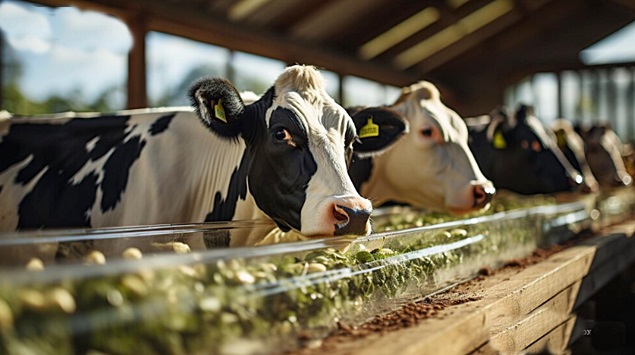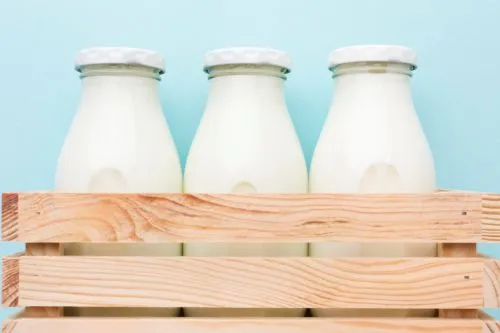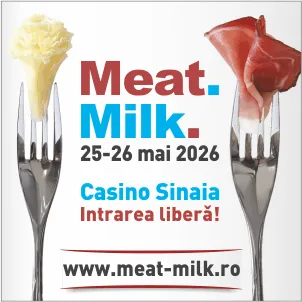
Nutritional Strategies for Dairy Cows Under Health Stress and Their Role in Reducing Greenhouse Gas Emissions
Dairy cows have specific nutritional needs to maintain optimal milk production and good health. When animals are affected by various diseases, their diet must be adjusted to support recovery, reduce metabolic stress, and prevent complications.
Proper nutritional management under such conditions is essential for animal welfare and the economic sustainability of the farm.
1. Feeding Cows with Ketosis
Ketosis is a common metabolic disorder during the postpartum period, caused by a severe energy deficit. Affected cows burn fat reserves for energy, leading to the accumulation of ketone bodies in the blood.
Nutritional strategies:
- Increase energy intake through high-quality forages, including grains and protected fats.
- Administer propylene glycol to reduce ketone body formation.
- Ensure adequate protein intake to support liver metabolism.
- Avoid poorly digestible, high-fiber forages that can limit energy intake.
2. Feeding Cows with Ruminal Acidosis
Ruminal acidosis occurs when the pH of the rumen drops below optimal levels, causing severe digestive dysfunction.
Nutritional strategies:
- Reduce the amount of grains and rapidly fermentable starches.
- Increase high-quality fiber to stimulate chewing and saliva production, which buffers rumen acidity.
- Administer sodium bicarbonate to balance rumen pH.
- Introduce dietary changes gradually to allow rumen flora to adapt.
3. Feeding Cows with Mastitis
Mastitis is an inflammation of the udder caused by bacterial infections, which affects both milk production and quality.
Nutritional strategies:
- Ensure increased intake of vitamin E and selenium to support the immune system.
- Increase omega-3 fatty acids, which have anti-inflammatory effects.
- Use probiotics and prebiotics to support healthy gut microbiota.
- Maintain a proper energy-protein balance to avoid additional metabolic stress.
4. Feeding Cows with Hypocalcemia (Milk Fever)
Hypocalcemia typically occurs during the peripartum period when cows fail to mobilize sufficient calcium from bones to support milk production.
Nutritional strategies:
- Reduce calcium intake before calving to stimulate natural calcium mobilization mechanisms.
- Administer oral or injectable calcium supplements immediately after calving.
- Maintain a proper mineral balance, with optimal calcium-to-phosphorus and calcium-to-magnesium ratios.
- Avoid high-potassium forages, which may interfere with calcium metabolism.
5. Feeding Cows with Digestive Disorders (Indigestion, Bloat)
Digestive issues can impair nutrient absorption and reduce production performance.
Nutritional strategies:
- Provide high-quality fibrous forages to support normal rumen function.
- Use live yeast and probiotics to stabilize the rumen microbiota.
- Avoid sudden dietary changes, which can disrupt digestion.
- Increase B-vitamin intake to support energy metabolism.
Nutritional Management for Recovery and Sustainability
Proper nutritional management of sick dairy cows is critical for fast recovery and consistent milk production. A balanced diet tailored to each condition can reduce the impact of illness and improve overall farm efficiency.
Working with veterinarians and nutritionists allows farmers to ensure optimal feeding and prevent complications associated with metabolic and infectious diseases.
Dairy Farmers Play a Key Role in Reducing Greenhouse Gas Emissions
Dairy farmers increasingly recognize their role in reducing greenhouse gas (GHG) emissions from livestock. They understand that through improved breeding practices, smarter herd management, and the use of artificial intelligence (AI) tools, they can help mitigate emissions from cattle.
As science evolves, farmers are eager to adopt new knowledge and apply it on their farms. Adjusting feed—both concentrates and forage—can reduce the overall amount of gas produced by cows. Various research projects have examined how lowering protein content in a cow's diet impacts methane emissions.
Feeding Adjustments to Reduce Methane
Studies show that cows can be fed approximately 10% less protein without negative effects on health or milk production. This can be achieved by lowering protein in concentrates and increasing corn silage in the diet.
Research from Wageningen University & Research in the Netherlands measured methane production in respiration chambers and analyzed feed composition. Results found it is more effective to feed cows with silage made from younger, more tender grass rather than grass harvested at a later growth stage.
Later-stage grass is more fibrous and harder to digest, while younger grass or young grass silage reduced methane emissions by up to 30%. However, young grass is high in nitrogen, so nitrogen content in the rest of the diet must be reduced to balance it out.
Corn silage has also proven to be one of the best methods for lowering both methane and ammonia emissions. Low in protein and rich in starch, corn silage provides energy through glucose conversion in the small intestine, rather than through rumen fermentation—thereby generating less methane. This also improves nitrogen use within the cow’s body, reducing nitrogen excretion in urine.
Smart Breeding for Low-Emission Cows
There is growing consensus that smaller cows naturally produce less methane, possibly due to differences in their digestive microbial communities. Researchers at the University of Pennsylvania’s School of Veterinary Medicine identified key differences between cows that emit less methane than average.
They discovered that low-methane-emitting cows have distinct microbial populations and fermentation patterns in their rumen.
The team stated: “Low methane emitters are more efficient cows. Methane formation is an energy-wasting process, so reducing methane production returns that energy to the cow for metabolic processes, including growth and milk production.”
Their goal was to breed animals that naturally emit less methane. Cows vary in their methane output, and previous studies suggest this variation is partly heritable.
Researchers identified five low- and five high-methane-emitting cows from a group of 130 lactating Holsteins at Penn State. They then studied genetic, milk production, rumen fermentation, and microbial differences between the two groups.
On average, low emitters produced about 22% less methane than high emitters—126 kg per cow per year versus 160 kg. There were no significant differences in feed intake, milk yield, or milk composition, although low emitters digested slightly less of their feed.
The most notable differences lay in the rumen microbes and fermentation patterns, as methane is a byproduct of microbial fermentation. Low-emitting cows hosted fewer types of methanogenic microbes.





